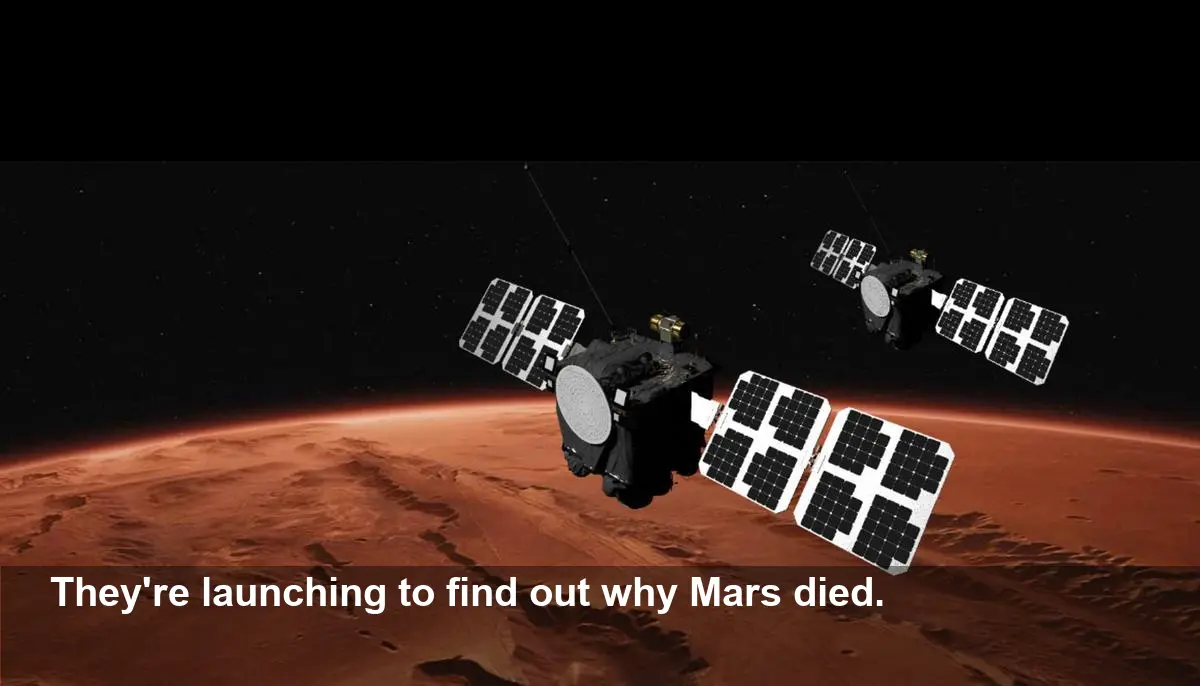NASA's Mars Warning: Twin Probes Launch to Deadly Planet

- First-Ever Twin Satellite Mission to Mars: UC Berkeley is leading NASA’s ESCAPADE mission, sending two spacecraft, nicknamed Blue and Gold, to create the first 3D map of Mars’ magnetic field.
- Astronaut Safety at Stake: The mission will investigate dangerous space weather and solar radiation, crucial for understanding the risks future human settlers on Mars will face.
- Revolutionary Trajectory: ESCAPADE will test a new, more flexible flight path to Mars, a technique that could be essential for future large-scale colonization efforts.
- Launch Details: The mission is scheduled to lift off from Cape Canaveral, Florida, no earlier than Sunday, Nov. 9, aboard a Blue Origin New Glenn rocket.
Uncovering a Planetary Ghost
NASA is set to launch a groundbreaking mission that could finally answer one of the most haunting questions in our solar system: What happened to Mars? The ESCAPADE mission, led by the University of California, Berkeley, will send twin satellites on a journey to the Red Planet to investigate why a once-potentially habitable world lost its atmosphere and became a barren, irradiated wasteland.
Scheduled for launch in early November, the dual spacecraft—dubbed "Blue" and "Gold" in a nod to UC Berkeley’s colors—will provide an unprecedented "stereo" view of the Martian magnetosphere. This 3D perspective is critical for understanding the forces that stripped Mars of its protective atmospheric blanket over billions of years.
The Dangers Lurking for Future Martians
Beyond solving an ancient mystery, ESCAPADE’s findings have urgent implications for the future of humanity. Mars lacks a global magnetic field like Earth's, leaving its surface exposed to a constant barrage of high-energy particle radiation from solar storms. This poses a lethal threat to any future astronauts or colonists.
"We will be making the space weather measurements we need to understand the system well enough to forecast solar storms whose radiation could harm astronauts on the surface of Mars or in orbit," explained Robert Lillis, the mission’s principal investigator from UC Berkeley’s Space Sciences Laboratory.
By mapping the planet's weak, patchy magnetic fields and monitoring how they interact with the solar wind, scientists hope to create the first reliable space weather forecasts for Mars, a tool that will be indispensable for ensuring the survival of human settlements.
Pioneering a New Path to the Red Planet
ESCAPADE isn’t just breaking new ground scientifically; it’s also revolutionizing how we get to Mars. Instead of using the traditional, time-sensitive Hohmann Transfer trajectory, which restricts launches to a few weeks every 26 months, the mission will pilot a new, more flexible route.
The "Queue Up" Strategy
The spacecraft will first travel to a stable gravitational point between the Earth and the sun, enter a long, looping orbit, and then use an Earth slingshot maneuver to head to Mars a year later. This innovative approach could allow future missions to launch over many months and essentially "queue up" before making the final burn for Mars. For a future where fleets of ships are needed to build a colony, this logistical flexibility is a game-changer.
"ESCAPADE is paving the way for that," said Jeffrey Parker of Advanced Space LLC, a NASA partner on the mission.
Representing a new, lower-cost approach to planetary exploration under NASA’s SIMPLEx program, the $49 million ESCAPADE mission demonstrates a shift toward more agile and commercially involved space science. As Blue and Gold begin their long journey in 2027, they carry not just advanced scientific instruments, but the hopes of understanding Mars’ tragic past to secure humanity’s future there.




